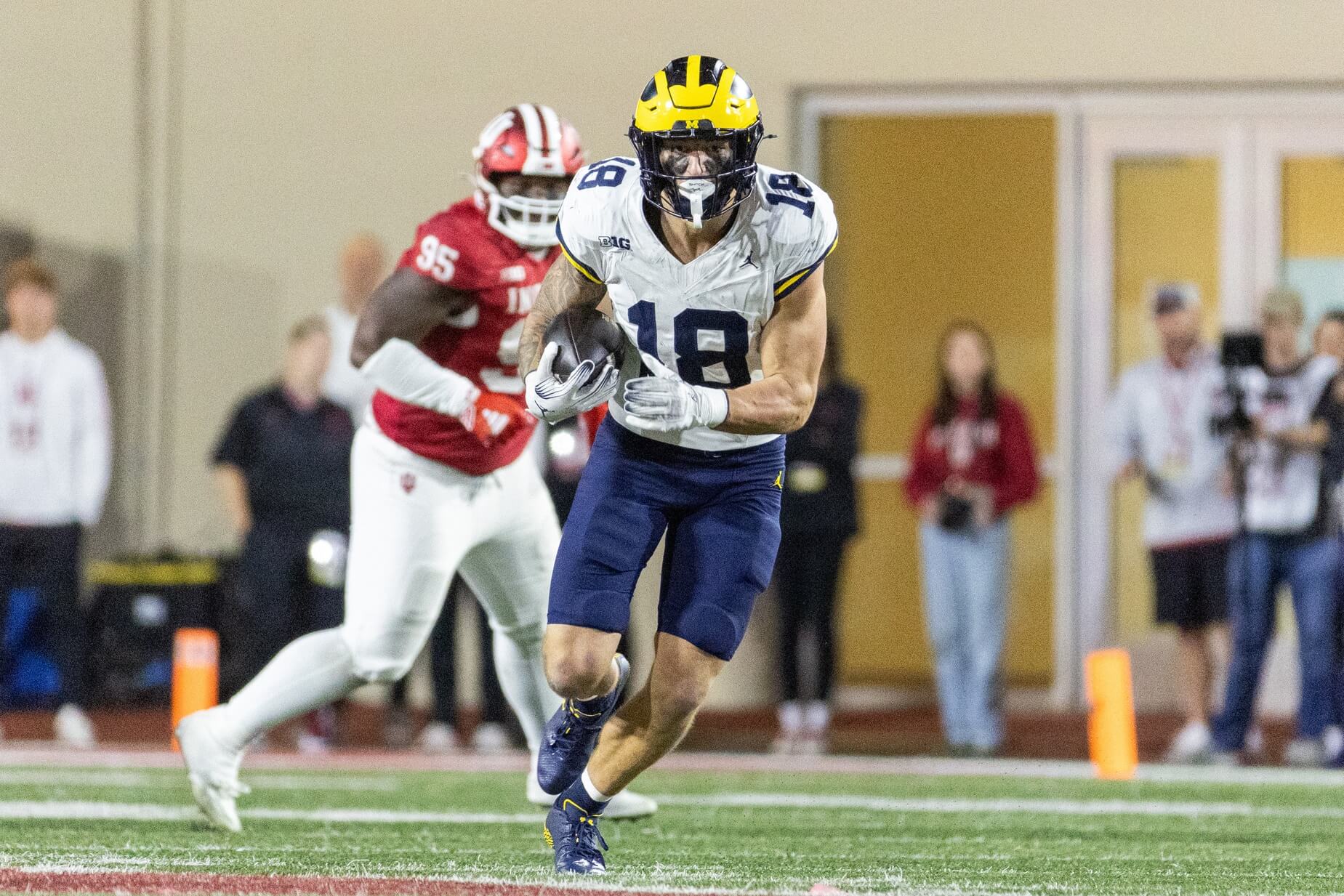
All 257 picks are in the books, and every general manager and head coach around the NFL likely sat at a podium Saturday night with a smile and said something to the effect of, “we got our guys.”
Time will tell if they did.
But after an eventful weekend in Green Bay — highlighted by one of the more stunning draft falls in recent memory — here’s a look at the notable winners and losers from the 2025 NFL Draft.
Advertisement
Winners
The Browns’ interesting QB gamble
I panned Cleveland’s thinking Thursday night after the Browns passed on a player, Travis Hunter, who could turn out to be one of the league’s most electric talents. That trade won’t age well for the Browns if Hunter becomes the star the Jaguars believe he will.
And outside of Myles Garrett, little about the Browns’ 2025 looks promising, especially the quarterback room, which suddenly is the most confounding in the league.
Take a look: an injured Deshaun Watson, a 40-year-old Joe Flacco, Kenny Pickett, Dillon Gabriel and Shedeur Sanders.
But taking a flier on Sanders at No. 144 was much different than taking Sanders at No. 2. Or No. 33. Or No. 36. Or No. 67. This is an opportunity for Sanders to arrive with a different set of expectations; no one in Cleveland will be counting on him to be the starter in 2025. Instead, he’ll start where every fifth-round pick starts his career: fighting for a spot on the roster post-Labor Day.
Nothing will be guaranteed. Nothing will be given. Heck, Sanders wasn’t even the first quarterback the Browns drafted — they took Gabriel 50 spots higher. Thus, Sanders’ first real test in the pros won’t be the Pittsburgh Steelers or Baltimore Ravens defense; it’ll be making sure he’s higher than Gabriel on the Browns’ depth chart.
If he disappoints in camp, the Browns can cut him. Another fifth-round whiff. Happens all the time. If he excels, Sanders can climb the depth chart; it’s not implausible to see him start some games in 2025.
It looks like the Browns will stage a competition in training camp between Flacco and Pickett, who’s on his third team in three years, as well as Gabriel and Sanders, though the rookies don’t figure to get many first-team reps early on. Watson’s status remains a question mark, though he’s unlikely to return to the field in 2025 and may never take another snap for the team.
Advertisement
But more significant is the long game the Browns are playing. Without outwardly saying it, they’re effectively punting their QB search to 2026, when the draft is expected to have a much deeper class, with Texas’ Arch Manning potentially at the top. Taking Sanders doesn’t preclude the Browns from anything next spring. Remember, Cleveland netted an extra first-round pick from Jacksonville in the Hunter trade. That’s valuable.
This team, due in large part to the uncertainty at quarterback, won’t be ready to compete this fall.
But the pain of 2025 could pay off in a big way come April 2026.
General manager Andrew Berry added some punch to his roster this weekend: Michigan defensive tackle Mason Graham, UCLA linebacker Carson Schwesinger, Ohio State running back Quinshon Judkins and Bowling Green tight end Harold Fannin Jr. were the Browns’ first four picks. All look like future starters. Land a top-tier quarterback in 2026 and the Browns could suddenly have a formidable nucleus.
Cleveland won’t be married to Sanders’ success — if he excels, it’ll turn out to be a gem of a fifth-round pick. If not, the Browns can still go big at quarterback next spring.
The Bears’ plan around Caleb Williams

Colston Loveland could give the Bears a 1-2 punch at tight end that resembles what new coach Ben Johnson had in Detroit. (Trevor Ruszkowski / Imagn Images)
Give Chicago Bears general manager Ryan Poles and new coach Ben Johnson credit: they’re not sitting back and simply hoping Caleb Williams makes a Year 2 jump. They’re exhausting the resources at their disposal to build an infrastructure around Williams that will help him become the player they need him to be.
So many organizations resist thinking like this and ultimately fail their young quarterback. It’s why the hit rate for QBs selected in Round 1 is under 40 percent. The Bears, going back generations, have been among the most guilty parties. Take last season. It was an absolute circus.
Advertisement
At least they learned from it.
Johnson’s arrival has changed something in Chicago: A defense-first franchise has shifted, remaking itself on the other side of the ball. The former Detroit Lions offensive coordinator brought with him an impetus to own the line of scrimmage, and the result in free agency was two new guards (Joe Thuney and Jonah Jackson) and a new center in Drew Dalman. Quarterbacks hate push from the interior. This should make Williams’ life easier.
Then on the first night of the draft, Johnson pushed for Colston Loveland, the shifty tight end out of Michigan. There’s no shame in a general manager giving his offensive coach (and play caller) what he wants: The Lions used to feast in 12-personnel (with two tight ends on the field) and the Bears will pair Loveland with Cole Kmet. (For those surprised the Bears went with Loveland over Penn State’s Tyler Warren, they weren’t the only NFL team to have Loveland ranked higher on the board.)
Adding a young wideout in the second round in Missouri’s Luther Burden III, who can contribute immediately from the slot, gives Williams another option.
Going offense with their first two picks sent a clear message: Caleb, we’re doing everything we can to help you.
The Chargers’ offense
Sometimes, you have to give credit to an organization that gets it. Jim Harbaugh’s Los Angeles Chargers know what they are and know what they want. Last year, plenty scoffed when L.A. passed up on two talented wideouts in Malik Nabers and Rome Odunze to take a towering offensive tackle in Joe Alt with the fifth pick.
Alt figures to be a backbone on the Chargers’ offensive line for a decade.
This year, the Chargers weren’t drafting as high for a reason: They made the playoffs in Harbaugh’s first season. L.A. still addressed their needs, piling up three offensive skill position players ranked in the top 10 at their position in Dane Brugler’s The Beast.
Advertisement
Taking a running back in the first round is something plenty of teams would resist, but North Carolina’s Omarion Hampton looks like a perfect fit in coordinator Greg Roman’s scheme. The need at wide receiver was obvious, and Mississippi’s Tre Harris can line up opposite Ladd McConkey and has the makings of a reliable possession receiver in an offense that loves to run the football.
Justin Herbert needed more talent around him. The Chargers obliged.
The Rams’ draft wizardry
After not making a first-round pick in seven years, the Los Angeles Rams nailed their selection last April, grabbing edge rusher Jared Verse.
They were back in character this year, moving out of the first round in a trade with the Atlanta Falcons. The payoff could be substantial: To move back 20 spots, the Rams acquired Atlanta’s first-round pick for 2026, which could be a top-10 selection. Impressive work from general manager Les Snead and coach Sean McVay.
Los Angeles, which wanted to move up to draft Brock Bowers last year, then found an option at tight end in Terrance Ferguson in the second round, a four-year starter out of Oregon who could become a perfect complement in the middle of the field to the Rams’ 1-2 punch on the outside in Davante Adams and Puka Nacua. A former basketball player, Ferguson figures to be a reliable, rangy target for Matthew Stafford, and maybe another chess piece McVay can exploit.
With Stafford now 37, the Rams would be wise to add a younger passer who can carry the torch whenever he decides to retire. Having an additional first-round pick in what’s expected to be a far deeper quarterback draft next spring will give them ample opportunity.
Young QBs in need of weapons
The Bears weren’t the only team to help their budding franchise quarterback.
For years, the New England Patriots have struggled to field a competent offense. And when the team landed a talented young quarterback worth building around in last year’s draft, the motive became obvious: help Drake Maye any way they could. Find him targets. Find him blockers. Find him talent.
Advertisement
If that meant overpaying a bit for a veteran receiver coming off an injury in Stefon Diggs, fine.
But the surest path to helping Maye would come through the draft, and with their first four picks this weekend, the Patriots went offense. They landed the best tackle in the class in Will Campbell, added skill position talent in running back TreVeyon Henderson and wideout Kyle Williams, then grabbed center Jared Wilson, who can learn behind new starter Garrett Bradbury. New (and also former) coordinator Josh McDaniels has to be thrilled. He’s got a young core with all kinds of talent. General manager Eliot Wolf and new coach Mike Vrabel deserve credit.
Another young quarterback who got help was the Carolina Panthers’ Bryce Young, who welcomed a first-round pick at wide receiver for the second straight year. In Tetairoa McMillan, Young will have a new weapon opposite Xavier Legette.
Smart pick by Panthers GM Dan Morgan and coach Dave Canales, even with other needs staring them in the face. Because if Young fizzles out, the Panthers aren’t going anywhere, anyway. Priority No. 1 needs to be his continued improvement. McMillan could become a huge part of that.
Is the Indianapolis Colts’ Anthony Richardson in the same conversation with Maye and Young? For starters, the third-year QB will have to win the job in Indy over Daniel Jones in training camp. But if Richardson does, he’ll have a tough, versatile new weapon to work with in Tyler Warren, who figures to be the Colts’ starter at tight end from Day 1.
Green Bay’s wide receiving room
Why would the Green Bay Packers — a perennial playoff team armed with one of the most talented young wide receiver rooms in football — spend two of their first three picks on that position?
The message was clear: Last season wasn’t good enough. Not from Christian Watson or Romeo Doubs or Jayden Reed or Dontayvion Wicks. Green Bay’s selection of Texas’ Matthew Golden at No. 23 wasn’t just head-turning because it was the first time the Packers drafted a receiver in Round 1 in 23 years; it was a telling statement by the team’s front office that it wants more from its receiver room.
Advertisement
Because nothing brings out the best in young players like competition.
This will be a good one to watch in training camp, because in addition to Golden — who has blazing 4.29 speed — the Packers also added another wideout, TCU’s Savion Williams, in the third round. Jordan Love’s going to have options on top of options, and if Green Bay’s plan works out, it’ll make all of them better.
Losers
The celebrity quarterback
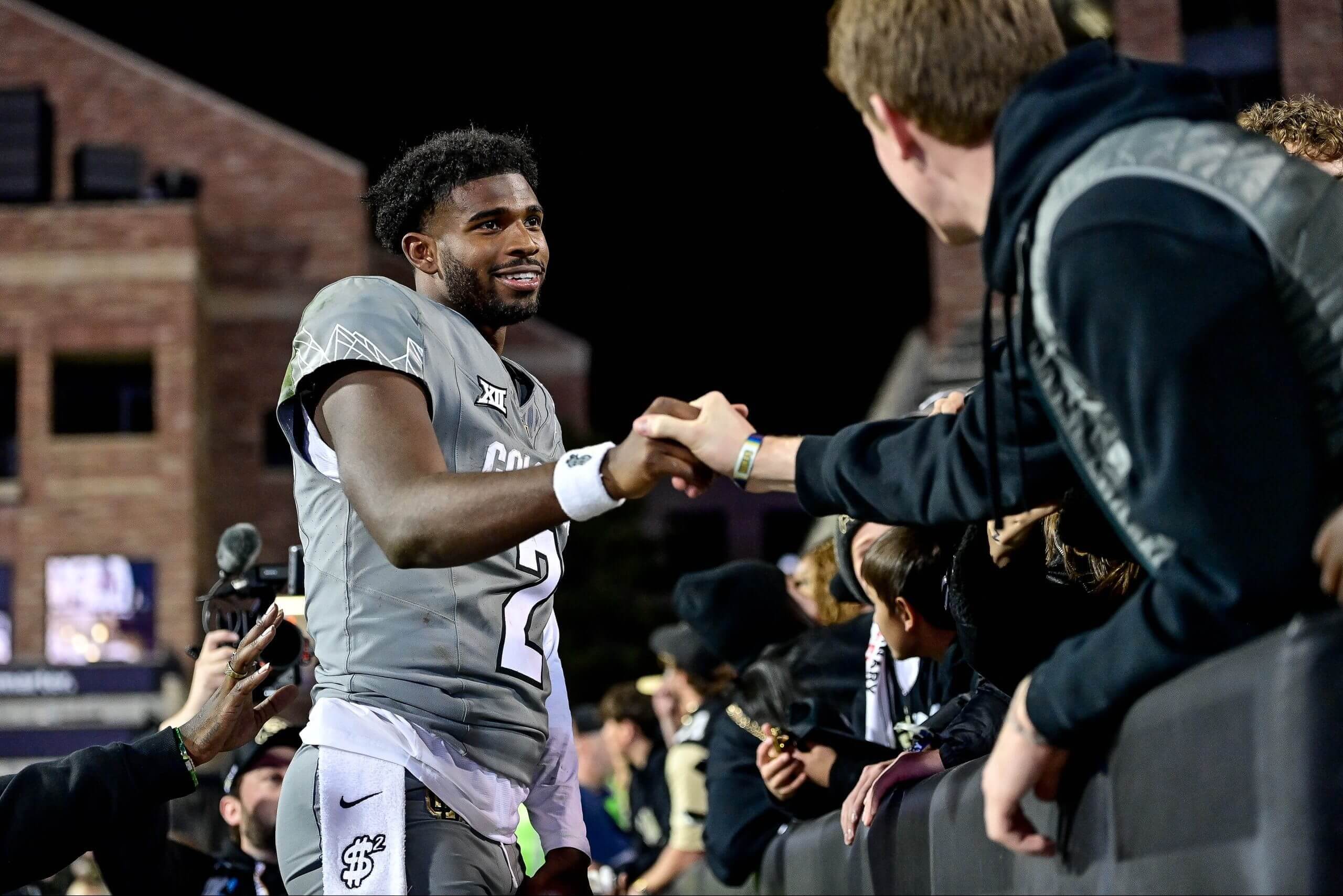
Shedeur Sanders’ fall to the fifth round had less to do with his on-the-field production at Colorado. (Dustin Bradford / Getty Images)
No matter what you think of Shedeur Sanders’ football talent, that’s not why he fell so precipitously in this year’s draft. Remember, QB is the one position teams love to reach on. Zach Wilson went second overall just four years ago. Trey Lance went a pick behind him. Josh Rosen went 10th in 2018 and was out of Arizona in 12 months. Paxton Lynch was a first-round pick who started four career games for the Broncos.
Sanders’ tape tells you he’s a second-round talent at worst. He didn’t fall to the fifth round because of his tape.
His slide felt like a repudiation of everything else, primarily how Sanders and his team handled the draft process. With quarterbacks, everything is something. Every interview. Every answer. Every detail. Every story shared by a former teammate. Every quote to the media.
Character concerns? Medical concerns? Teams will overlook those issues in the blink of an eye if the talent is there. Without jaw-dropping talent — Sanders is a capable quarterback, not a dynamic one — every intangible is amplified.
Those intangibles, it seems, cost him this weekend. Sanders had plenty of opportunities to help himself throughout the draft process, but he dismissed them. He didn’t play in the Senior Bowl. He didn’t throw at the combine. With at least a few teams, he didn’t interview all that well, according to various reports. All of which is not uncommon, but when you’re viewed as more backup than starter, teams want to make sure they’re getting the right fit. Humility matters, especially for a thankless position like QB2 or QB3.
Advertisement
Plenty had no interest in Sanders in that regard.
Remember Deion Sanders hinting over a year ago that he’d “pull an Eli” with Shedeur if he didn’t like where his son landed in the draft? It was a nod to Eli Manning’s decision in 2004 not to play for the Chargers, who were then forced to ship him to the New York Giants. That comment, even if Deion later walked it back, couldn’t have gone over well in draft rooms.
Sometimes, teams simply don’t want the spotlight — and the possible distraction — that comes with drafting a player as well-known as Sanders for a secondary role. When talent doesn’t supersede that, we get what we witnessed this weekend: a staggering tumble down the draft board.
The Steelers’ leverage with Aaron Rodgers
They need him. Badly.
At this point, it seems like Aaron Rodgers is the Pittsburgh Steelers’ only viable option at quarterback, unless a playoff team from a year ago is willing to rest its season on the shoulders of Mason Rudolph. Pittsburgh’s selection of Ohio State’s Will Howard in the sixth round Saturday did nothing to change this.
The Steelers’ QB room at the moment looks like this: Rudolph, Howard and Skylar Thompson.
Does Rodgers save them? Probably not. He’s 40. He has regressed since rupturing his Achilles. Does he elevate them? Yes, but remember, he’d be joining a division already stacked with two perennial MVP contenders in Lamar Jackson and Joe Burrow, both of whom are in their prime.
Rodgers did play better down the stretch with the Jets last season, and Pittsburgh is stout on defense. He wouldn’t have to be the savior in the Steel City, but rather a cog in a well-run operation. The nonsense that stymied his two seasons with the Jets — plenty of which was Rodgers-related — isn’t something the Steelers are known for, or tolerate. In New York, it was Rodgers’ team. In Pittsburgh, it’s Mike Tomlin’s team.
Advertisement
Still, resting everything on Rodgers — who hasn’t even committed to returning for a 21st NFL season — remains a dicey proposition. It was telling that, after he was hired, new Jets coach Aaron Glenn couldn’t get out of the Rodgers business fast enough.
It sounds like Rodgers will land in Pittsburgh at some point; team president Art Rooney told the Steelers Audio Network on Friday that Rodgers does “want to come here” and that the Steelers expect word soon. But they lost leverage.
(Top photo: Dustin Bradford / Getty Images for ONIT)
This news was originally published on this post .





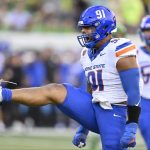
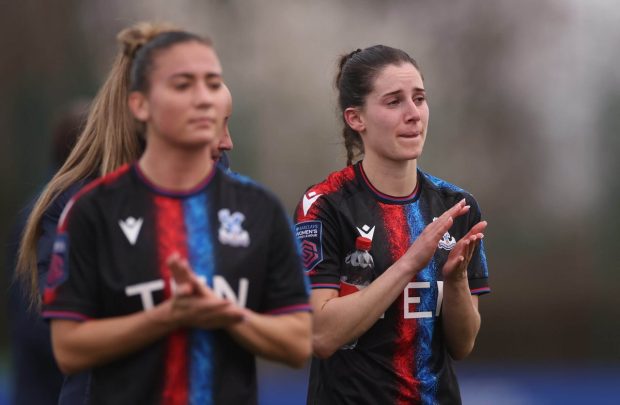

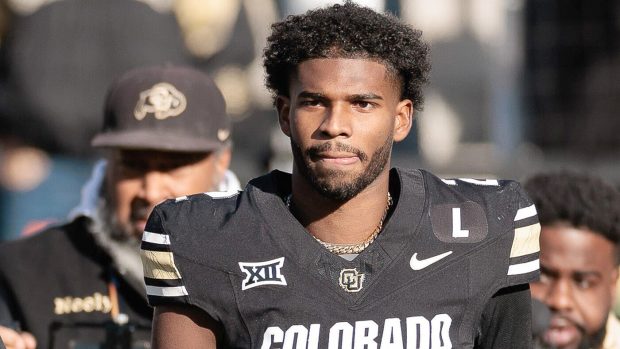
Be the first to leave a comment